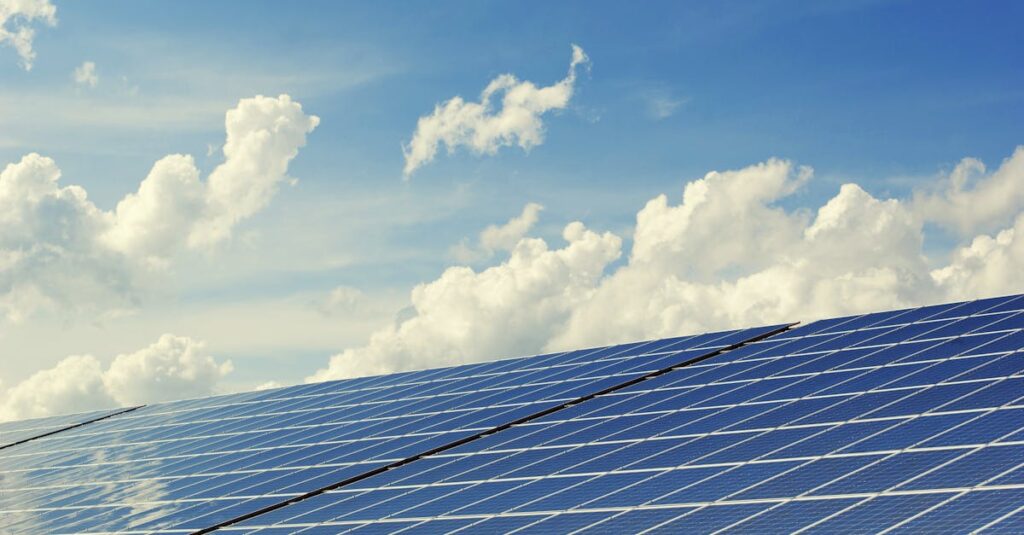The Energy Revolution: What’s Next in 2025?
Imagine a world where your home is powered by the sun, your car is charged by the wind, and energy is both sustainable and abundant. That world is not as far off as it once seemed. By 2025, renewable energy technologies are poised to revolutionize the way we generate and use power. From solar to wind, innovations are emerging at a pace that even the most optimistic experts couldn’t have predicted just a few years ago.
But what exactly does the future of renewable energy hold? Are we on the cusp of a major energy breakthrough, or are we still stuck in the early stages? Let’s take a closer look at the technologies that will shape our energy landscape in the coming years, and how they might change our daily lives.
Solar Power: Smaller, Smarter, and More Efficient
Solar power has come a long way from its humble beginnings. Remember when solar panels were bulky, inefficient, and mostly limited to large-scale installations? Fast forward to 2025, and things have changed dramatically. Solar technology is not only more efficient, but it’s also becoming smaller and more affordable.
In fact, researchers are working on new types of solar cells that are flexible and transparent, allowing them to be integrated into windows, roofs, or even your phone screen. Imagine having solar power everywhere—from your office window to your backpack! Companies like Tesla are pushing the boundaries with their solar roof tiles, which look just like regular shingles but generate power from the sun. These innovations are transforming solar power from a niche product into a mainstream solution.
One of the most exciting developments in solar is the efficiency gains made possible by perovskite solar cells. These lightweight materials have the potential to outperform traditional silicon panels, both in efficiency and cost. While still in the experimental phase, perovskites could make solar power cheaper and more accessible than ever before.
Wind Power: Bigger, Faster, and More Efficient
When we think of wind power, we often picture large wind turbines standing tall on the horizon. These towering structures, often found on farms or offshore, have been the workhorses of the renewable energy sector. But as we head into 2025, wind turbines are getting even bigger, faster, and more powerful.
New turbine designs are increasing in size, with blades reaching up to 100 meters in length—about the length of a football field. These colossal turbines can generate more electricity, even with lighter winds, and are making wind power more competitive with traditional energy sources. Offshore wind farms, in particular, are expected to play a huge role in 2025, as coastal regions offer optimal conditions for large-scale wind generation.
But it’s not just about size. Thanks to advancements in materials science and design, wind turbines are becoming more efficient and less costly to manufacture and maintain. For example, floating wind turbines—designed for deeper waters—are opening up new areas for wind energy that were once off-limits. As these technologies mature, wind power will become a much larger piece of the global energy mix.
Energy Storage: The Missing Link
Here’s the big question: how do we store all this renewable energy? After all, solar power is only available during the day, and wind power depends on, well, the wind. That’s where energy storage comes in, and it’s one of the biggest challenges—and opportunities—facing the renewable energy sector today.
In 2025, we’re likely to see significant improvements in battery storage technology. Companies like Tesla and others are already developing large-scale battery systems that can store renewable energy for later use, smoothing out the intermittent nature of solar and wind power. But the breakthrough we’re all waiting for is the development of ultra-efficient, affordable, and long-lasting batteries that can be used in everything from homes to electric cars.
Solid-state batteries, which promise to be safer and more energy-dense than traditional lithium-ion batteries, are particularly exciting. They could make electric vehicles more affordable, boost grid storage capacity, and even help solve the problem of energy waste. Imagine charging your car once a week instead of once a day. That future might be closer than we think.
Hydrogen: The Fuel of the Future?
Hydrogen has been hailed as a potential game-changer for clean energy. By 2025, hydrogen fuel cells could become a common solution for long-term energy storage and heavy industries that are hard to decarbonize with electricity alone, such as shipping, aviation, and steel manufacturing.
Hydrogen fuel cells work by combining hydrogen with oxygen to produce electricity, with water as the only byproduct—making them one of the cleanest forms of energy available. But the biggest challenge for hydrogen has been its cost and the fact that it’s typically made using fossil fuels. However, advancements in green hydrogen production methods—using renewable energy to split water molecules—are bringing down costs and making hydrogen a more viable option for large-scale energy storage and transportation.
In fact, some companies are already rolling out hydrogen-powered buses and trucks, and several countries are investing heavily in hydrogen infrastructure. By 2025, we could see hydrogen fueling stations dotted along highways, making it easier to power everything from trains to delivery trucks with clean energy.
The Role of AI and Smart Grids
As renewable energy technologies advance, another key piece of the puzzle is how to manage them. That’s where AI and smart grids come in. These systems use data and machine learning to optimize how energy is generated, distributed, and consumed, ensuring that supply always meets demand.
For example, smart grids can automatically adjust the flow of electricity based on factors like weather, time of day, and the availability of renewable energy. This means that excess solar power generated during the day can be stored and used later, or distributed to areas that need it the most. AI can also help predict energy demand and optimize energy production to reduce waste.
With the rise of smart home devices, consumers will also play a larger role in managing their own energy consumption. Imagine having your thermostat, lights, and appliances all working together to reduce your energy bill while ensuring your home stays comfortable and efficient.
Conclusion: A Bright Future Ahead
As we move toward 2025, the future of renewable energy is full of promise. From solar panels that double as windows to wind turbines the size of skyscrapers, the technologies on the horizon are set to transform how we generate, store, and use power. While challenges remain, especially around energy storage and infrastructure, the progress made in just the past few years suggests that we are on the cusp of an energy revolution.
But the future of energy isn’t just about the technology—it’s also about how we as individuals, businesses, and governments respond to these changes. It will take collaboration, investment, and a shift in how we think about energy to fully realize the potential of renewables. So, as we look ahead to 2025 and beyond, one thing is clear: the future of energy is clean, smart, and brighter than ever.

